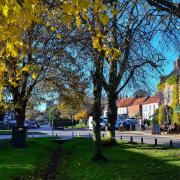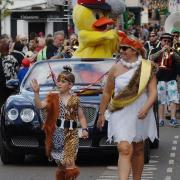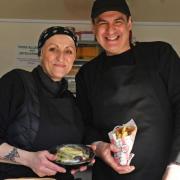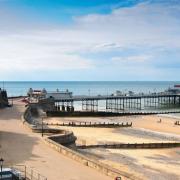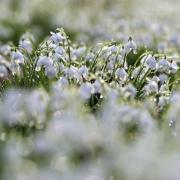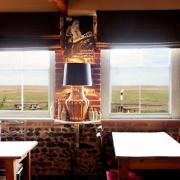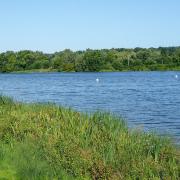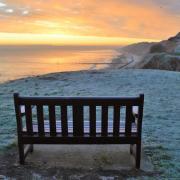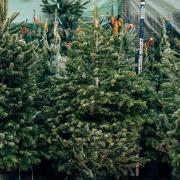Mark Nicholls discovers how the Norfolk Broads are teaching the next generation about wildlife, ecology and the natural landscape

A stunning watery wonderland, the Broads are alive with flora and fauna, insect, fish and bird life. Hewn out of vast tracts of Norfolk and Suffolk centuries ago for their prized peat, the water-filled channels have created an astonishing wetland network.
Yet they need sustenance – the care of man to manage nature and sustain the delicate ecological balance while also hosting the commercial considerations of mass tourism.
Within this, the Norfolk Broads are an enormous outdoor classroom, a natural learning space to discover more about wildlife, ecology and the freedoms this beautiful area delivers.

Many organisations – such as Norfolk Wildlife Trust (NWT), the Broads Authority, the RSPB, How Hill, the Museum of the Broads - work together to ensure this learning experience is targeted and the natural landscape and the wonderful heritage the Broads offers, cascades down the generations.
David North, NWT head of people and wildlife, says: “People, particularly the young, can learn so much from the Broads; the sheer diversity and beauty, and the absolute feeling of life everywhere around.
“While we may like to look at the big ‘showy’ things, the range of plants, dragonfly and insects and invertebrates are also there to see and the Broads are very much dependent on them.”

NWT nature reserves at Hickling Broad and Ranworth Broad have visitor centres and the opportunity for boat trips and activities such as pond-dipping and looking for “mini-beasts”.
“About 6000 children a year visit the two nature reserves,” adds David, “and they provide safe access to wetland sites, making it easy to get close to nature but without disturbing the wildlife. This is important because today young people have less opportunity to get outside among the natural environment than previous generations may have done.
“With school parties we provide set activities which range from looking for birds, with binoculars and in hides, to looking at the freshwater ecology of mini-beasts, the food chain and plants and the different habitats and how plants and animals have adapted to that. What we want to do is provide them with a hands-on outdoor experience where they can enjoy the space and walk around, looking and listening.”

For families, the nature reserves have activities at weekends and in the school holidays, and while visitors may see rarities such as otters and swallowtail butterflies, marsh harriers, cormorants and even hear the booming of a bittern, they can also enjoy more common species too. Throughout June, wildlife trusts across the UK staged the 30 Days Wild initiative to challenge people to do something every day for a month to become better connected to nature.
The How Hill Trust near Ludham is a residential centre as a base to experience the unique environment of the Norfolk Broads.
Education manager Lizzy Ames says: “We teach pupils about wildlife, take them out on boats, tell them about why the Broads are there, about local history and the way that land management affects wildlife but also why it is important to manage the land. If young people do not know about the landscape, they will not be able to look after it in the future.”
How Hill also holds fun days with family activities, including nature trails with dyke dipping and “marsh monster” sessions to learn about the marsh lands.
“When the schoolchildren come here, they love it,” says Lizzy. “They are just wowed by it, and what is great is that we are now getting teachers who came here as children bringing their own pupils.”
Another organisation with ongoing projects linked to the Broads is the Royal Society for the Protection of Birds (RSPB). Since last November, the RSPB’s schools outreach co-ordinator Clare Whitelegg and a team of volunteers have been delivering free wildlife sessions to children in Norwich and the Norfolk Broads area. This has seen young people conduct surveys to see how hospitable their school grounds are for wildlife, and discovering how to make a home for creatures such as beetles, birds, hedgehogs and frogs.
“We’ve reached 2,000 schoolchildren in this way already,” says Clare, who explains the project – funded by the Aldi supermarket chain- aims to get schoolchildren closer to nature, learn more about their local environment and help them relate to wildlife and ecology in different ways.
RSPB nature reserves at Strumpshaw Fen and Berney Marshes also have regular family events, pond-dipping and nature trails.
Clare adds: “The Broads are a unique habitat in the UK and it is so important for young people to get this link to nature. The more closely people are linked to the environment, the more pro-environment they become, and they will help nature in the long run and become the next generation of conservationists.”
Today, the Broads attracts some eight million visitors every year, enjoying, relaxing and learning in amid a unique watery landscape.
Historic haven
Formed in medieval times when peat was dug as fuel for heating and cooking, the Broads reach over an area of 303 square kilometres and are Britain’s third largest inland waterway. A haven for a quarter of this country’s rarest species, there are 28 Sites of Special Scientific Interest (SSSIs).
Broads Environmental Education Network
The Broads are recognised as an important educational resource for all ages from primary schoolchildren, to post-graduate research and adult visitors.
Supporting this, the Broads Environmental Education Network (BEEN) exists to promote learning about the Broads and incorporates more than 40 organisations, from education bodies to wildlife charities, local businesses and visitor attractions. With a common goal to improve understanding of the area and the creatures, plants and people that live within it, the group has developed a Broads Curriculum, which is a series of online education packages for schools.
The Broads Authority also endeavours to help provide an experience in the Broads for every child within five kilometres of the Broads executive area during their schooling through an education programme delivered with the help of BEEN partners, including the Country Trust, How Hill Trust, Whitlingham Charitable Trust and organisations such as the RSPB and the Norfolk and Suffolk Wildlife Trusts.
For more information call 01603 610734 or visit www.broads-authority.gov.uk/learning
Broad approach
The Museum of the Broads at Stalham Staithe brings to life the story of the Broads, its people, wildlife, landscape and boats.
Situated on an historic staithe, it aims to inform visitors of all ages about the Broads’ social history and how people interacted with the unique environment, and also hosts schools and colleges with a teaching resources page on its website.
A team of volunteers with specialist knowledge of boat-building, wherries, crafts, local history and tools are on hand to answer questions.
Museum Of The Broads, The Staithe, Stalham, NR12 9DA, is open daily from 10am-4.30pm; 01692 581681; www.museumofthebroads.org.uk




